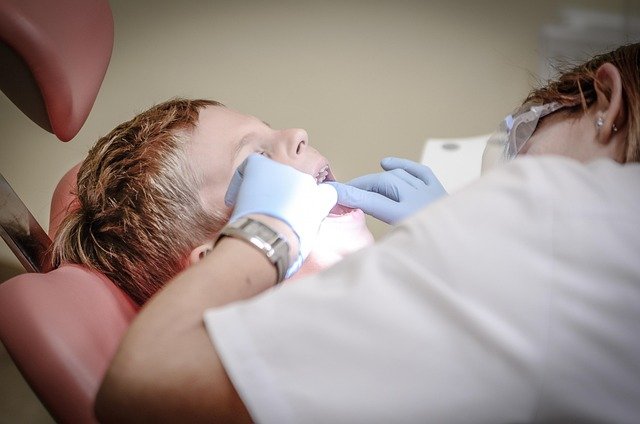The Truth About Braces 2025: Prices and Features
Modern braces in 2025 have evolved far beyond traditional metal brackets. With innovations that improve comfort, speed, and aesthetics, orthodontic care is entering a new era. Learn what sets today’s braces apart, explore their unique features, and understand what to expect when considering this proven teeth-straightening method.

Modern orthodontic treatment offers more options than ever before, combining traditional effectiveness with innovative technologies to create personalized treatment plans. Patients today can choose from various orthodontic solutions that cater to different lifestyle needs, aesthetic preferences, and budget considerations.
Latest Braces Technology 2025
The orthodontic field has embraced digital transformation, introducing several cutting-edge technologies that enhance treatment precision and patient comfort. Digital scanning has largely replaced traditional impressions, creating accurate 3D models of teeth and bite patterns. Smart brackets equipped with sensors can monitor tooth movement and provide real-time feedback to orthodontists. Self-ligating brackets reduce friction and may decrease treatment time by allowing teeth to move more freely. Clear aligner technology has advanced with improved materials that provide better force distribution and more predictable results.
Modern Orthodontic Trends
Current orthodontic practices emphasize patient comfort and treatment efficiency through various innovative approaches. Accelerated orthodontics techniques, including micro-osteoperforations and high-frequency vibration devices, can potentially reduce treatment duration. Customized treatment planning using artificial intelligence helps orthodontists predict outcomes more accurately. Telemedicine integration allows for remote monitoring and reduces the frequency of in-person appointments. Adult orthodontics has gained significant popularity, with treatments designed specifically for mature patients who may have different dental health considerations.
Types of Braces Explained
Patients can select from several orthodontic appliance categories, each offering distinct advantages and considerations. Traditional metal braces remain highly effective and cost-efficient, featuring smaller brackets and more comfortable wires than previous generations. Ceramic braces provide a more aesthetic option with tooth-colored brackets that blend with natural teeth. Lingual braces are placed on the inside surfaces of teeth, making them virtually invisible from the front. Clear aligners offer removable convenience and aesthetic appeal, though they require strict compliance for optimal results. Self-ligating braces eliminate the need for elastic ties and may reduce treatment time.
Dental Alignment Innovations
Recent developments in orthodontic technology focus on improving treatment outcomes while enhancing patient experience. 3D printing technology enables the creation of custom brackets and aligners tailored to individual tooth anatomy. Temporary anchorage devices provide additional control over tooth movement in complex cases. Advanced wire materials, including heat-activated and shape-memory alloys, deliver consistent gentle forces throughout treatment. Digital treatment monitoring allows orthodontists to track progress more precisely and make real-time adjustments to treatment plans.
How Much Should Braces Cost You in 2025?
Orthodontic treatment costs vary significantly based on complexity, duration, and chosen treatment method. Understanding typical pricing ranges helps patients budget appropriately for their orthodontic investment.
| Treatment Type | Provider Example | Cost Estimation |
|---|---|---|
| Traditional Metal Braces | Smile Direct Club | $1,800 - $4,500 |
| Ceramic Braces | Invisalign | $3,000 - $6,000 |
| Clear Aligners | ClearCorrect | $2,500 - $5,500 |
| Lingual Braces | 3M Incognito | $5,000 - $8,000 |
| Self-Ligating Braces | Damon System | $3,500 - $6,500 |
Prices, rates, or cost estimates mentioned in this article are based on the latest available information but may change over time. Independent research is advised before making financial decisions.
Treatment duration typically ranges from 12 to 36 months, with most cases completing within 18 to 24 months. Insurance coverage varies, with many plans covering 50% of orthodontic treatment up to a lifetime maximum. Payment plans and financing options are commonly available through orthodontic practices, making treatment more accessible to patients with budget constraints.
Making Informed Treatment Decisions
Selecting appropriate orthodontic treatment involves considering multiple factors beyond initial cost. Treatment complexity, lifestyle requirements, aesthetic preferences, and long-term maintenance needs all influence the optimal choice. Consultation with qualified orthodontists provides personalized recommendations based on individual dental conditions and treatment goals. Many practices offer complimentary consultations that include digital imaging and preliminary treatment planning.
This article is for informational purposes only and should not be considered medical advice. Please consult a qualified healthcare professional for personalized guidance and treatment.




